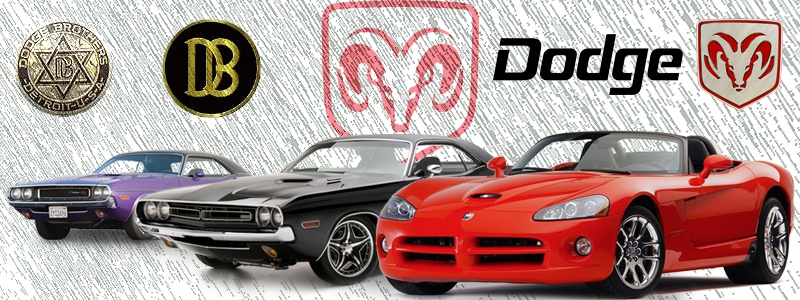Founded by brothers John and Horace Dodge; the duo began as bicycle machinists working in their fathers Michigan (USA) shop, then moving to Windsor, Ontario (Canada) where they adapted their skills to meet the needs of the fledgling automotive industry. They were particularly adept at the manufacture of intricate automotive parts, their products soon coming to the attention of Henry Ford. So impressed with the quality of their workmanship, and the brothers themselves, Ford would offer them a whopping one-tenth interest in his own new car company.
That partnership would endure for the next 12 years, the brothers then splitting from Ford to pursue the creation of their own automotive empire, particularly given that the Fords of the day were built almost entirely out of Dodge parts! When asked why he and his brother wanted to build their own car, John Dodge reportedly said "Think of all the Ford owners who will someday want an
automobile".
In 1914 Dodge Brothers was formed, and in their first year the "Old Betsy" would be released, a rugged car built for reliability and durability at a time such vehicles were held in very high regard; that year Dodge built a total of 249 new cars. In 1928 Chrysler acquired the company, creating a new division to help it better compete with the all conquering GM, and at the same time adding much needed additional production facilities. During World War 2 the company would manufacture the highly acclaimed Power Wagon - a vehicle that would continue in production a decade after the war.
The company would continue to lead the way in technical innovation, including the first 140-horsepower "Red Ram"
Hemi V8 engine in the
1953 Coronet. In the 1960s and '70s Dodge contributed to America's fascination with high-performance muscle cars by manufacturing the 505 Charger Daytona’s for stock- car racing and as production cars. From the 1980’s Dodge engineers and designers would set about the creation of some of the most desirable sheet metal going around, from the Dodge 400 (and the Chrysler Lebaron) convertibles of the 1980’s, to the Viper of the 90s. And like the Old Betsy of days past, Dodge would also manufacture a formidable lineup of rugged pickups and small trucks, such as the Ram, Dakota and Durango.
Also see: The History of Dodge (USA Edition)



